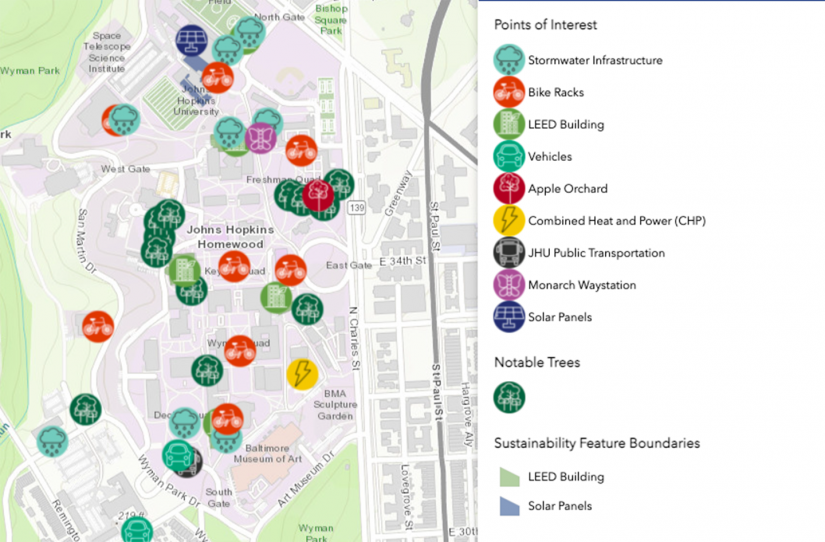Over the past fiscal year, Johns Hopkins University has reached several sustainability milestones, which are highlighted in the Office of Sustainability's 2021 Annual Report. These include a significant reduction of JHU's carbon emissions—down 30% since its 2008 baseline despite over 10% growth in campus square footage—as well as the university's trajectory toward meeting its 51% greenhouse gas reduction goal in 2022, three years early.
In addition to reflecting on the accomplishments of the previous fiscal year, the Sustainability Annual Report outlines the university's path forward in addressing holistic sustainability. Most notably this includes the development of a new JHU Sustainability Plan over the coming year, which will include broad engagement with the university community. The Sustainability Plan development process will seek to elevate the visibility of sustainability as a key university priority, develop next steps in addressing the need for robust climate action, and unite the JHU community in developing an ambitious, integrated, and measurable framework.
"In these times of tremendous disruptions caused by the global pandemic, the Johns Hopkins community has stayed remarkably committed to reaching its sustainability goals," said Bob McLean, vice president for facilities and real estate, in the report.
As the university prepares for these upcoming milestones, the Office of Sustainability has also expanded its internship program into a cohort-based model for both undergraduate and graduate students. One participant, Julia Comeau, a graduate student in SAIS' Energy, Resources, and the Environment program, has been supporting the office's participation in a joint study with other universities focusing on the use of proxy carbon pricing to influence decision making on capital projects.
Another intern, rising senior Kylie Poe, has been working to help build an interactive Sustainability GIS Map and StoryMap of the Homewood campus. These tools can be used in conjunction with other campus tours or as stand-alone guides to highlight points of interest around the Homewood campus, including LEED-certified buildings, stormwater infrastructure, on-site renewable energy, and more.

Image caption: The GIS Information Map provides a guide to sustainable points of interest throughout the Homewood campus.
"The Office of Sustainability is deeply committed to supporting students' applied experiences through our internship program," said Julian Goresko, sustainability director for Johns Hopkins University. "Students like Julia and Kylie bring innovative ideas and fresh energy to our office, which enhance our work and support the university's academic mission while helping us chart a path for the future."
"Working with the team at the Office of Sustainability for the past year has only served to amplify my passion for sustainability and environmental efforts," Poe said. "I am grateful to be part of such a hardworking, creative group of thinkers, as the university continues its efforts toward building a healthier and more sustainable environment."
Posted in University News
Tagged sustainability, office of sustainability, chew








